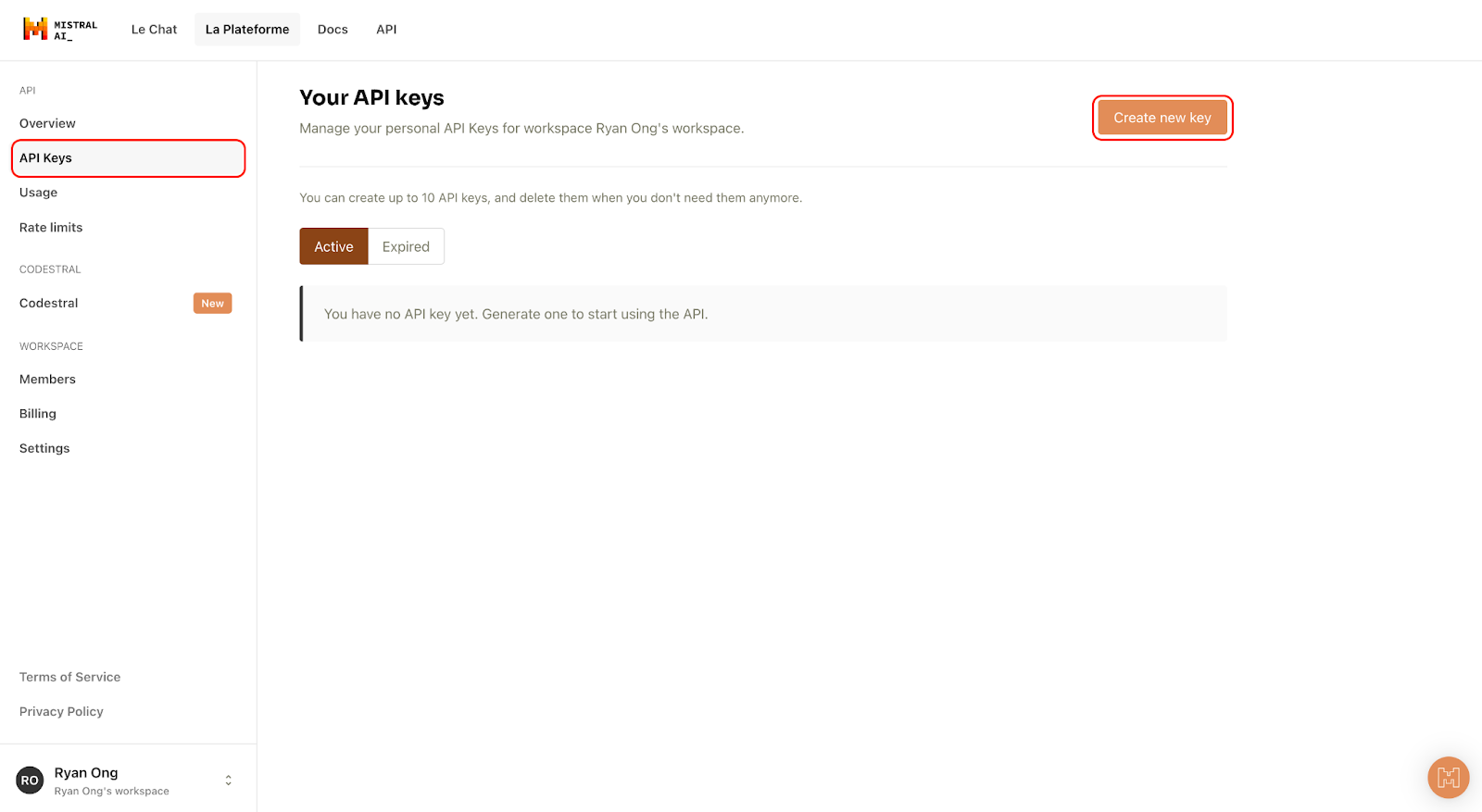course
Codestral API Tutorial: Getting Started With Mistral’s API
To connect to the Codestral API, obtain your API key from Mistral AI and send authorized HTTP requests to the appropriate endpoint (either codestral.mistral.ai or api.mistral.ai).
Jun 2024 · 9 min read
Learn more about AI and APIs!
3 hours
15.5K
course
Developing AI Systems with the OpenAI API
3 hours
1K
course
Implementing AI Solutions in Business
2 hours
16.9K
See More
RelatedSee MoreSee More
blog
What is Mistral's Codestral? Key Features, Use Cases, and Limitations
Codestral is Mistral AI's first open-weight generative AI model designed for code generation tasks, automating code completion, generation, and testing across multiple languages.
Ryan Ong
8 min
tutorial
A Comprehensive Guide to Working with the Mistral Large Model
A detailed tutorial on the functionalities, comparisons, and practical applications of the Mistral Large Model.
Josep Ferrer
12 min
tutorial
Mistral 7B Tutorial: A Step-by-Step Guide to Using and Fine-Tuning Mistral 7B
The tutorial covers accessing, quantizing, fine-tuning, merging, and saving this powerful 7.3 billion parameter open-source language model.
Abid Ali Awan
12 min
tutorial
GPT-4o API Tutorial: Getting Started with OpenAI's API
To connect through the GPT-4o API, obtain your API key from OpenAI, install the OpenAI Python library, and use it to send requests and receive responses from the GPT-4o models.
Ryan Ong
8 min
tutorial
Getting Started with the Claude 2 and the Claude 2 API
The Python SDK provides convenient access to Anthropic's powerful conversational AI assistant Claude 2, enabling developers to easily integrate its advanced natural language capabilities into a wide range of applications.
Abid Ali Awan
12 min
tutorial
Getting Started With Mixtral 8X22B
Explore how Mistral AI's Mixtral 8X22B model revolutionizes large language models with its efficient SMoE architecture, offering superior performance and scalability.
Bex Tuychiev
12 min





